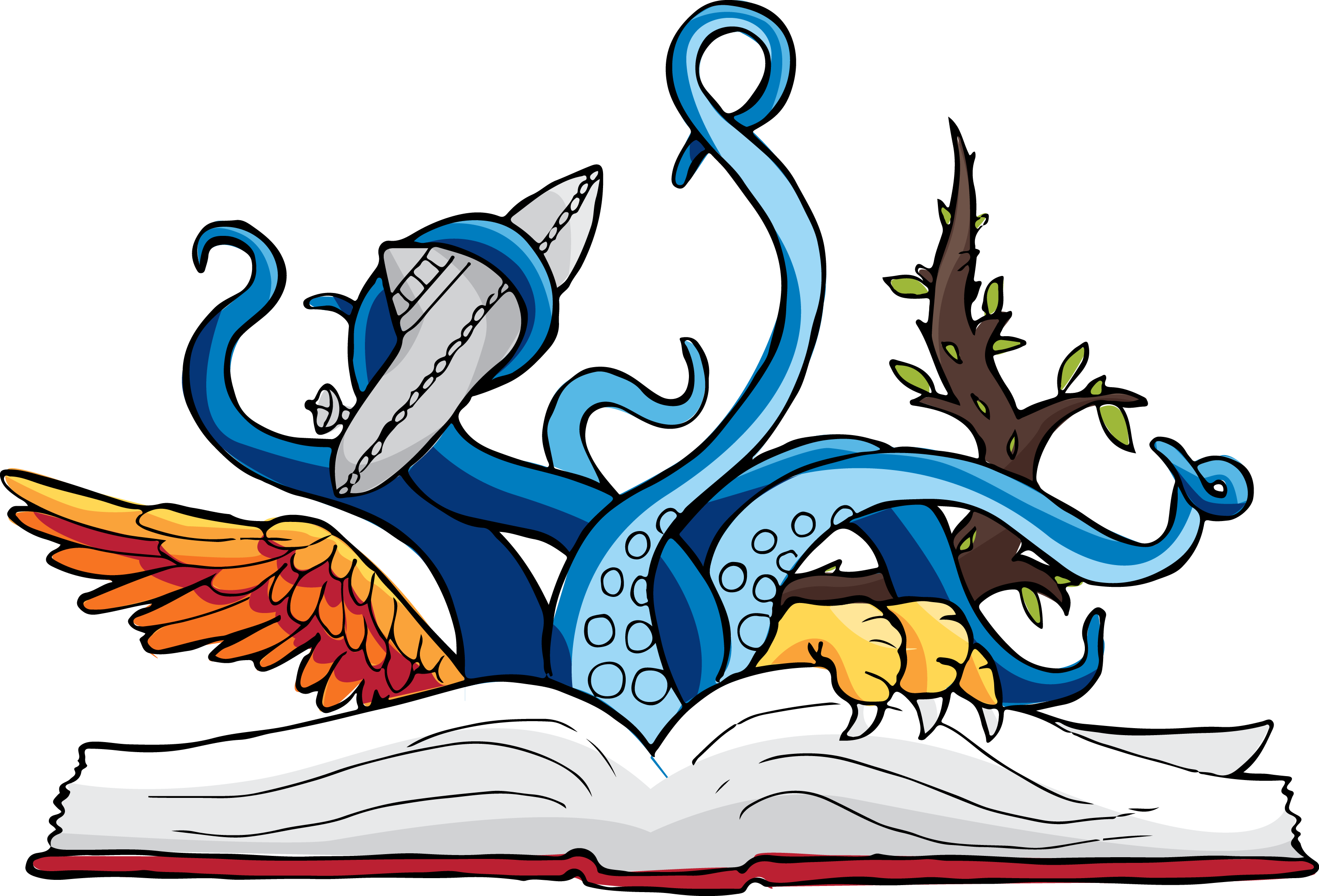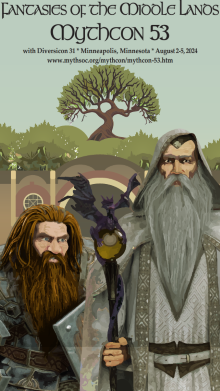Loading...
Location
Albuquerque, NM
Document Type
Paper
Event Website
https://www.mythsoc.org/mythcon/mythcon-52.htm
Start Date
31-7-2022 2:00 PM
End Date
31-7-2022 2:50 PM
Description
While Tolkien was inspired by Norse and Anglo-Saxon myths, he incorporated certain plot structures from Greco- Roman myths in Beren and Lúthien and Fall of Gondolin. Contemporary authors continue to be inspired by myths as well. This paper will explore mythic YA fantasy, and common elements mainly in the works of Rick Riordan, Michael Scott, Eoin Colfer, and Cassandra Clare, all of whom use portals to enable their main characters to enter parallel universes. Riordan often uses museums/artefacts as portals to fantastical dimensions. His Percy Jackson series, the Heroes of Olympus series, and the Kane Chronicles are well-researched, while the dry sense of humour, well-paced plots and fantastical action sequences keep his young readers spell-bound. Older readers can find his in-depth research and the fact that the Greek gods tend to stick to certain archetypal characteristics (even though they’ve been dragged to the modern world) to be interesting. The main pre-occupation of the female protagonist (Helen Hamilton) in Josephine Angelini’s Star-crossed series is romance, even though she literally has to go through hell to fulfill her destiny. For example, in The Hunt of the Unicorn (2011) by C. C. Humphreys, the Unicorn tapestries in Cloisters in New York act as a portal, providing passage to another world. In his Artemis Fowl series, Eoin Colfer focuses on Celtic lore, certain elements of which can be discerned in Tolkien’s works as well. C.S. Lewis was inspired by Christian myths, and Cassandra Clare’s YA Shadowhunter series seems to be derived from Biblical myths (complete with angels and Archangels). Though focused around Flamel, The Secrets of the Immortal Nicholas Flamel series by Michael Scott combines features/personages from various myths. Since the young main characters aren’t familiar with myths, their encounter with gods and monsters from these worlds are akin to interacting with aliens. They end up learning the rules of these new societies and the functioning of magical systems or implements quite painfully. Authors building half of their stories from myths already have well-established godly/mythic characters and worlds to play with. Hopping in and out of these shadowy worlds through various portals is another characteristic of these novels. Most of the authors try to anchor these parallel universes in certain spots in the real world, so as to give their readers a sense of excitement that these mythic worlds are not that far from their everyday existence. It’s also interesting to explore which landmarks or buildings, cities, or places in the USA or Europe have been conflated with portals or entry points to these hidden worlds. Issues that modern teens face, such as being raised by a single parent, how to deal with violence or bullying, or budding romances with an ethnically different person are dealt with obliquely in these novels. Though they’re meant for Young Adults, older readers interested in the different ways old myths are recycled or twisted can enjoy reading them too. Especially if they’re interested in exploring how well the archetypes of gods/monsters are handled in these modern takes.
Included in
Common Elements in YA Mythic Portal Fantasies
Albuquerque, NM
While Tolkien was inspired by Norse and Anglo-Saxon myths, he incorporated certain plot structures from Greco- Roman myths in Beren and Lúthien and Fall of Gondolin. Contemporary authors continue to be inspired by myths as well. This paper will explore mythic YA fantasy, and common elements mainly in the works of Rick Riordan, Michael Scott, Eoin Colfer, and Cassandra Clare, all of whom use portals to enable their main characters to enter parallel universes. Riordan often uses museums/artefacts as portals to fantastical dimensions. His Percy Jackson series, the Heroes of Olympus series, and the Kane Chronicles are well-researched, while the dry sense of humour, well-paced plots and fantastical action sequences keep his young readers spell-bound. Older readers can find his in-depth research and the fact that the Greek gods tend to stick to certain archetypal characteristics (even though they’ve been dragged to the modern world) to be interesting. The main pre-occupation of the female protagonist (Helen Hamilton) in Josephine Angelini’s Star-crossed series is romance, even though she literally has to go through hell to fulfill her destiny. For example, in The Hunt of the Unicorn (2011) by C. C. Humphreys, the Unicorn tapestries in Cloisters in New York act as a portal, providing passage to another world. In his Artemis Fowl series, Eoin Colfer focuses on Celtic lore, certain elements of which can be discerned in Tolkien’s works as well. C.S. Lewis was inspired by Christian myths, and Cassandra Clare’s YA Shadowhunter series seems to be derived from Biblical myths (complete with angels and Archangels). Though focused around Flamel, The Secrets of the Immortal Nicholas Flamel series by Michael Scott combines features/personages from various myths. Since the young main characters aren’t familiar with myths, their encounter with gods and monsters from these worlds are akin to interacting with aliens. They end up learning the rules of these new societies and the functioning of magical systems or implements quite painfully. Authors building half of their stories from myths already have well-established godly/mythic characters and worlds to play with. Hopping in and out of these shadowy worlds through various portals is another characteristic of these novels. Most of the authors try to anchor these parallel universes in certain spots in the real world, so as to give their readers a sense of excitement that these mythic worlds are not that far from their everyday existence. It’s also interesting to explore which landmarks or buildings, cities, or places in the USA or Europe have been conflated with portals or entry points to these hidden worlds. Issues that modern teens face, such as being raised by a single parent, how to deal with violence or bullying, or budding romances with an ethnically different person are dealt with obliquely in these novels. Though they’re meant for Young Adults, older readers interested in the different ways old myths are recycled or twisted can enjoy reading them too. Especially if they’re interested in exploring how well the archetypes of gods/monsters are handled in these modern takes.
https://dc.swosu.edu/mythcon/mc52/schedule/20



Comments
Paper: Sultana Raza
Common Elements in YA Mythic Portal Fantasies
Tech Mod: Tim Lenz